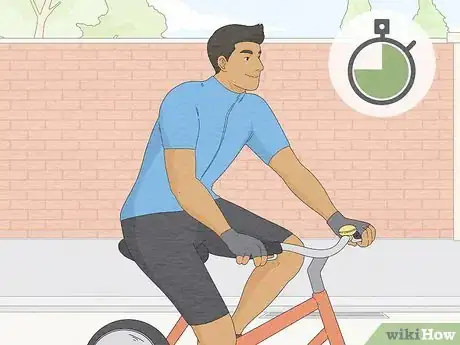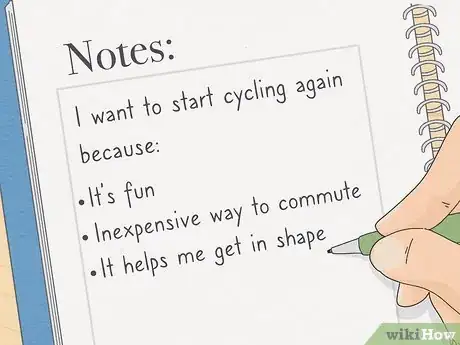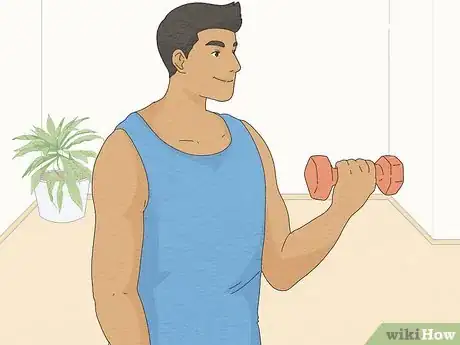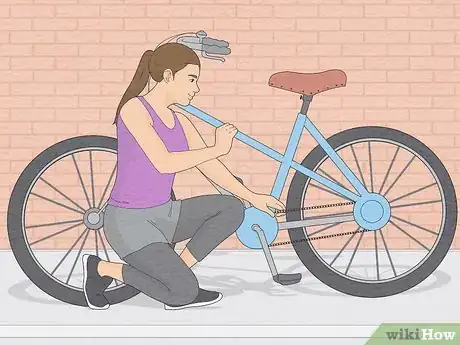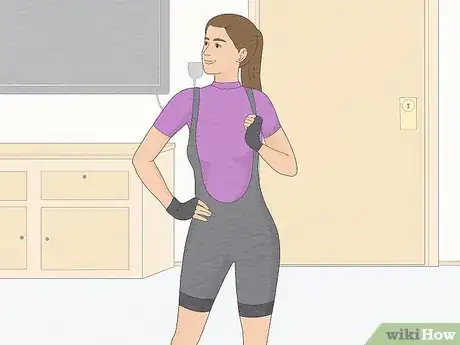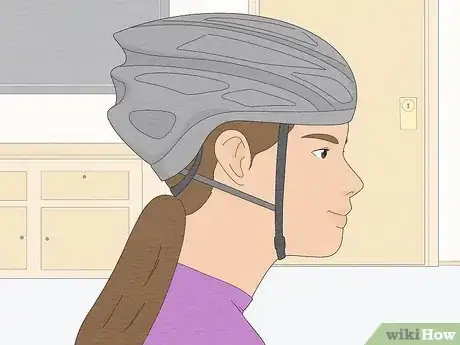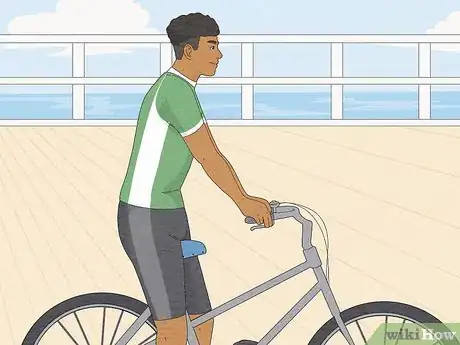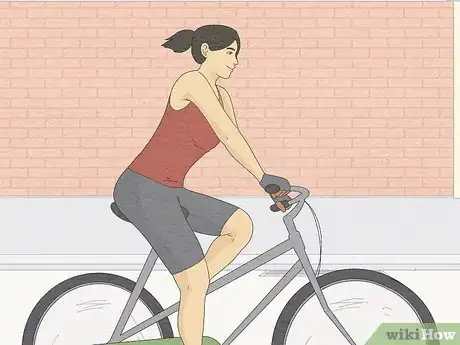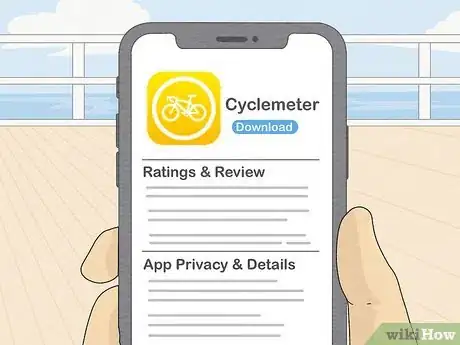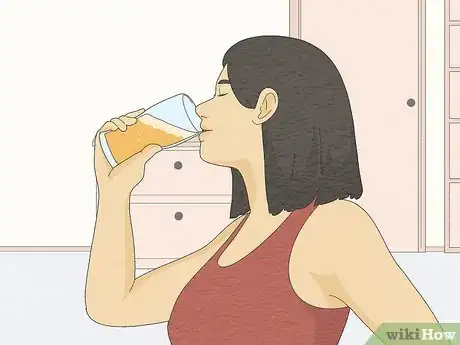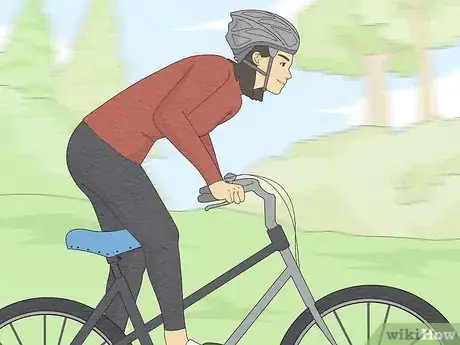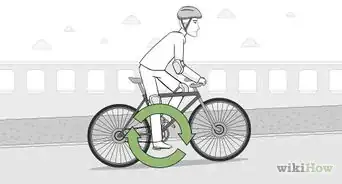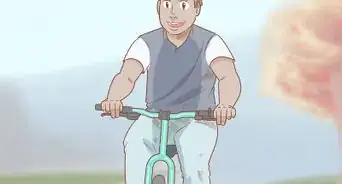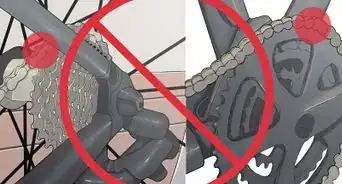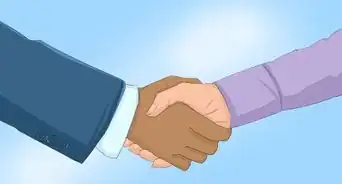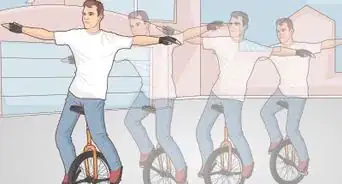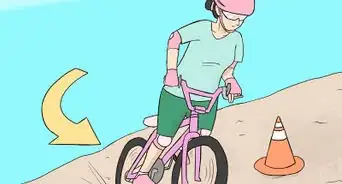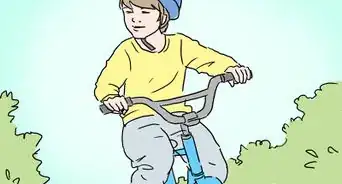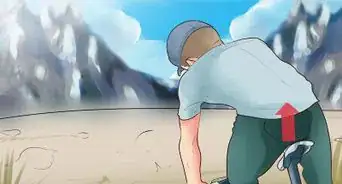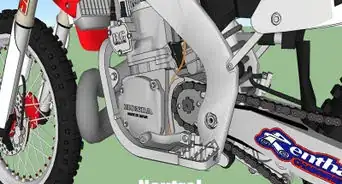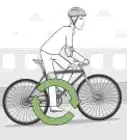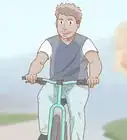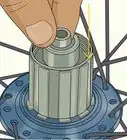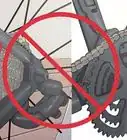This article was co-authored by Jonas Jackel and by wikiHow staff writer, Eric McClure. Jonas Jackel is the Owner of Huckleberry Bicycles, a bicycle retail store based in San Francisco, California. Jonas has over 20 years of experience managing bicycle retail stores and has operated Huckleberry Bicycles since 2011. Huckleberry Bicycles specializes in servicing, repairing, and custom building road, cross, gravel, touring, folding, and e-bikes. Jonas was also previously sat on the Board of Directors for Bike East Bay, a bicycle-advocacy non-profit organization based in Oakland, California.
There are 14 references cited in this article, which can be found at the bottom of the page.
This article has been viewed 16,143 times.
If you used to enjoy cycling and it has been a while since you've been out on the road, you may be contemplating getting back on the saddle. Cycling has become more popular than it's ever been since we’ve been locked in quarantine, and with good reason.[1] Biking is a great way to improve your overall fitness without putting yourself through rigorous, high-impact exercises, and it's a ton of fun. Altogether, there are plenty of reasons to pick your cycling hobby back up, and almost no reason to assume it's too late for you and your bike!
Steps
Motivation
-
1Establish a clear, simple goal for yourself. Setting a clear goal gives you something to work toward, and it's one of the best ways to motivate yourself to actually get on the bike. Write your goal down somewhere where it will be visible so that you don't lose sight of why you want to ride again.[2] Possible goals include:
- I want to complete 45-minute rides at least 3 times a week to lose 15 pounds (6.8 kg) and get back in shape.
- I want to have fun cycling and rebuild my love for the hobby by biking at least twice every weekend.
- I want to pick cycling back up so that I can compete in marathons and races again.
- I want to start biking again so that I can reconnect with my biking buddies and be more social.
- I want to get out of the house more often by taking a 15-minute ride at least 4 times a week.
-
2Determine why you stopped biking in the first place. Do a little self-reflection and explore what happened to make you stop cycling. This will help you get back on the bike while avoiding any mistakes that made you stop in the past. This will also help you frame your riding goals for the future.[3]
- Was there a life or work event that made you stop? If so, plan to start riding on your days off when you're relaxed to take some of the pressure off.
- Did an injury stop you in your tracks? If it did, talk to your doctor about getting back into tip-top shape before you hop back on the bike and take it slow.
- Was cycling no longer fun? If the answer is yes, treat this time like a hobby, not a job. Don't beat yourself up over meeting goals or tackling tough trails.
- Were you just taking a break and doing something else? If so, don't sweat it. It's natural to move in and out of hobbies as our interests shift.
Advertisement -
3Make a list of the reasons you want to start biking again. Regardless of why you stopped, reminding yourself of all of the benefits of biking will help you stay in a positive headspace as you prepare to get back into it. Nothing is going to amp you up more than the recollection of how much fun you had and how good you felt after a long ride.[4] Remember:
- Cycling is a fun, inexpensive way to commute and get around. It's also good for the environment!
- Cycling is good for you. It's an enjoyable way to get back in shape.
- It's a great way to de-stress and feel better about yourself after a long day.
- If your goal is to lose weight, cycling is one of the best ways to shed some pounds.
-
4Find a riding buddy if you want to keep yourself accountable. If you've been putting off cycling because you don't find it fun to bike on your own or you need a little support, ask a friend to start cycling with you. Alternatively, you can reach out online to find someone your age who is interested in getting back on the bike. This way, the two of you can push one another to stick with it and show up for those early morning rides.[5]
- Strava is a social networking site designed specifically for cycling enthusiasts. You're sure to find someone there who would be interested in cycling with you! You can use the app to track your progress on the bike, as well.[6]
-
5Treat this process like you're learning to cycle for the first time. Forget about your old marathons or 2-hour treks and don't beat yourself up about performing as well as you used to. You're probably going to be a little rusty, which is totally fine. But if you're constantly comparing yourself to your past performance or other cycling enthusiasts you know, you're just going to get discouraged.[7]
- It's okay to keep your former glory in mind if you have a competitive mindset and it drives you to stick with it, but for most people, this isn't a productive way to jumpstart an old habit.
- It's important to be realistic about your future performance. After years of bike-free relaxation, don't expect yourself to have an easy time tackling steep grades and grueling trails.
-
6Get back in shape if you haven't been active in a while. Eat a healthy diet full of lean proteins, whole grains, and vegetables. Start stretching every day to prepare your muscles for the road. Calisthenics, like push-ups and crunches, and light weightlifting are both great ways to recondition your muscles.[8]
- Yoga is a great way to build your flexibility back up if you're trying to regain fitness.
- Staying hydrated and trading in the alcohol and soda for water is another great way to get your body back into riding shape.
Gear
-
1Inspect your bike to make sure it's road-ready. Check your tire pressure and refill your tires as needed. Tighten any loose nuts and bolts. Degrease and re-lubricate your chain with bike chain lubricant since your it has probably gotten quite dirty while you've had the bike in storage. Check your brakes to make sure they're tight and rewrap the handlebars if the grips are a little worn-down.[9]
- You can always take your bike to a local bike shop and pay to get a tune-up. This is a great option if you also have some shopping to do for some new cycling clothes or a helmet.[10]
- You can always buy a new bike if you want to start fresh! It's likely not a good idea to drop thousands of dollars on a custom build if you aren't sure you're going to stick with it though, so grab a cheap starter bike if you're getting back into the swing of things.[11]
-
2Adjust your saddle so that your bike is comfortable. If it's been a while since you've been on your bike, now is the perfect time to make adjustments. Sit on your bike and try pedaling a few times. If your legs aren't nearly fully-extended when the pedals are at their lowest point, raise your seat a bit. Adjust the tilt of the saddle so that it's parallel to the ground as well.[12]
- If you're a little older, you may want to raise the height of the handlebars as well. This will take some of the pressure off of your lower back as you ride.
-
3Break out your cycling clothes and see if you need to replace anything. If you've got your old cycling gear, break it out of the closet to make sure everything still fits. Try on your old cycling bibs and chamois to see how they feel. If they're too tight or loose, head to your local bike shop and pick up some fresh clothes.[13]
- If you're buying a new chamois, make sure it has some comfortable padding for your rear!
- If you were never particularly into bike clothes, there's nothing wrong with sticking to the T-shirt and shorts. The cycling outfit isn't mandatory if you're just riding for fun.
- You may also want to grab some cycling gloves and some protective eyewear.
-
4Pick up a new helmet to stay safe on the road. You may not know this, but cycling helmets expire after 3–5 years.[14] The padding degrades over time and your old helmet may not protect you very well. Swing by your bike shop and find a comfortable helmet that's snug, but not tight. It is absolutely essential that you stay safe on the road or trails—especially if it's been a while since you've rode.[15]
- There's a semi-popular myth out there that it's more dangerous to wear a helmet since it gives you a false sense of protection. The reality is that your helmet is much more likely to save your life than it is to drive you to do something risky.[16]
Bike Rides
-
1Pick a calm, free day to go on a casual ride and get used to the bike. On a cozy afternoon, take your bike out and just go for a relaxing ride through a relaxing, low-traffic area. Pedal slowly and take in the fresh air and sights. This is one of the best ways to remind yourself how much fun cycling is, and you're going to be more likely to get back into the habit of cycling if you start out on a chill ride or two.[17]
- If it's been a long time since you rode, consider going to a flat grassy area where bikes are allowed. Then, once you feel comfortable, you can move to a paved area.[18]
- If you're enjoying this, just keep doing it! There's no need to rush back into competitive racing if you're having fun just riding at your own pace.
- If you're in an area with pedestrians or other cyclists, always pass on the left, and always let the person know when you're about to pass them.[19]
-
2Keep it unstructured and fun for the first few rides. Don't start off by pushing yourself to take hour-long rides before the sun comes up right away. This may discourage you to get back in the habit of riding. If you've got a biking buddy, bike at the slowest rider's pace. Spend these first few rides just wandering wherever your heart takes you. The freedom and exploration will keep things exciting.[20]
- Once you've had some fun on the bike, you can start working your way up to taking more physically-taxing rides.
-
3Choose interesting locations for your first few tougher rides. For your first few “serious” rides, pick a local destination that you find interesting and bike there. Try to keep it local at first, and then gradually work your way up to some sites that are further away from your home. You could choose a trail that leads to a creek you enjoy, or head to a local tourist attraction. Going somewhere you enjoy will add an interesting layer to these first few rides.[21]
- You can even bike to a shop or diner you really love and spend a little time there before heading back. This can be a great way to reward yourself for working up to longer and longer bike rides.
-
4Build your stamina up over time and take rest days after long rides. If you run into joint pain, knee issues, or you're extremely sore, take a few days off to give your body time to heal. Slowly and gradually build your way up to longer rides or higher speeds. Taking things slow will make it a lot easier for you to get back in the habit of riding regularly.[22]
- If you set a really lofty goal to bike 10 miles (16 km) or something, you're just going to get discouraged when you don't hit your target. Try increasing your rides by 10 minutes a session, or add 1⁄2–1 mi (0.80–1.61 km) to each ride to work your way up slowly.
Goal Achievement
-
1Be consistent and take regular rides every week. Set a schedule for yourself to ride once every 3–5 days. Unless you're explicitly riding with the intent of just having fun, building a consistent routine is the best way to turn your regular rides into a habit. It's also the best way to work towards your overarching goal of getting in shape, improving your overall health, or becoming the best competitive cyclist you can be.[23]
- Make sure that you take at least 2 days off between tough rides. Your body needs time to repair itself after longer or tougher cycling trips.
- If your goal is just to have fun on your bike, don't worry too much about riding for a certain amount of time or anything. Just try to bike 2-3 times a week.
-
2Track your performance with an app or journal. Tracking your performance is one of the best ways to gauge whether you're improving yourself or getting stronger. Either write down your distance and time after each ride, or download an app (like Strava, Zwift, or Cyclemeter) to keep track of your speed, calories, and distance while you ride.[24]
- You can also use a heartrate monitor or O2 monitor if you want to track your health while you ride.
- If you do any biking in remote areas, you may want to invest in a waterproof GPS tracker that attaches to your bike.
-
3Reward yourself after long rides with a small treat. Whenever you complete a tougher trail or longer trek, give yourself a small treat and celebrate. This could be a small candy, a warm cup of coffee, or a cold beer after a night ride. Having something to look forward to will motivate you to push through when the going gets tough, and that little treat will be so much tastier if you feel like you earned it.[25]
- You could also take a different approach with this by withholding something you enjoy until you meet your weekly goal or take that difficult morning ride.
-
4Build your way up towards events or tough trails. Once you're back in the habit of riding regularly, keep setting new goals to challenge yourself. Tackle new, challenging hills or trails. Aim to push yourself on longer rides. If you're interested in competitive cycling, sign up for races or join a competitive bike club. By setting new goals for yourself, you'll keep cycling fun and fresh for years to come![26]
- There's nothing wrong with continuing to go on regular, relaxing rides if that was your original goal.
- Working your way up to events and difficult rides will also keep you from getting bored with your regular rides.
- For example, you could bike 5 miles (8.0 km) a week for a month, and then increase that to 7 miles (11 km) a week the next month. By slowly working your way up, eventually you’ll be marathon-ready!
- You could also start out by biking calm side streets for 1 month, and then move on to tackling busier lakefront paths or winding trails. From there, you could work your way up to tougher uphill climbs or hilly paths.
Expert Q&A
Did you know you can get expert answers for this article?
Unlock expert answers by supporting wikiHow
-
QuestionHow do you stay safe riding a bike?
 Jonas JackelJonas Jackel is the Owner of Huckleberry Bicycles, a bicycle retail store based in San Francisco, California. Jonas has over 20 years of experience managing bicycle retail stores and has operated Huckleberry Bicycles since 2011. Huckleberry Bicycles specializes in servicing, repairing, and custom building road, cross, gravel, touring, folding, and e-bikes. Jonas was also previously sat on the Board of Directors for Bike East Bay, a bicycle-advocacy non-profit organization based in Oakland, California.
Jonas JackelJonas Jackel is the Owner of Huckleberry Bicycles, a bicycle retail store based in San Francisco, California. Jonas has over 20 years of experience managing bicycle retail stores and has operated Huckleberry Bicycles since 2011. Huckleberry Bicycles specializes in servicing, repairing, and custom building road, cross, gravel, touring, folding, and e-bikes. Jonas was also previously sat on the Board of Directors for Bike East Bay, a bicycle-advocacy non-profit organization based in Oakland, California.
Owner, Huckleberry Bicycles
-
QuestionWhat is the best practice to pass a cyclist?
 Jonas JackelJonas Jackel is the Owner of Huckleberry Bicycles, a bicycle retail store based in San Francisco, California. Jonas has over 20 years of experience managing bicycle retail stores and has operated Huckleberry Bicycles since 2011. Huckleberry Bicycles specializes in servicing, repairing, and custom building road, cross, gravel, touring, folding, and e-bikes. Jonas was also previously sat on the Board of Directors for Bike East Bay, a bicycle-advocacy non-profit organization based in Oakland, California.
Jonas JackelJonas Jackel is the Owner of Huckleberry Bicycles, a bicycle retail store based in San Francisco, California. Jonas has over 20 years of experience managing bicycle retail stores and has operated Huckleberry Bicycles since 2011. Huckleberry Bicycles specializes in servicing, repairing, and custom building road, cross, gravel, touring, folding, and e-bikes. Jonas was also previously sat on the Board of Directors for Bike East Bay, a bicycle-advocacy non-profit organization based in Oakland, California.
Owner, Huckleberry Bicycles
References
- ↑ https://www.vice.com/en/article/v7489x/how-to-get-back-into-biking-during-the-pandemic
- ↑ https://cyclingtips.com/2015/11/the-struggle-is-real-five-tips-to-get-back-in-to-shape/
- ↑ https://www.bicycling.com/skills-tips/a20708655/get-your-motivation-to-ride-back/
- ↑ https://www.bicycling.com/skills-tips/a20708655/get-your-motivation-to-ride-back/
- ↑ https://cyclingtips.com/2015/11/the-struggle-is-real-five-tips-to-get-back-in-to-shape/
- ↑ https://www.vice.com/en/article/v7489x/how-to-get-back-into-biking-during-the-pandemic
- ↑ https://www.cyclingweekly.com/fitness/training/how-to-resume-your-training-after-a-break-206888
- ↑ https://www.theguardian.com/environment/bike-blog/2011/jun/23/bike-blog-avoid-injury
- ↑ https://www.wmar2news.com/business/consumer/tips-to-make-sure-your-bike-is-road-ready-every-time-you-go-to-ride
- ↑ https://www.vice.com/en/article/v7489x/how-to-get-back-into-biking-during-the-pandemic
- ↑ https://www.vice.com/en/article/v7489x/how-to-get-back-into-biking-during-the-pandemic
- ↑ https://www.health.harvard.edu/newsletter_article/getting-back-on-the-bike
- ↑ https://www.vice.com/en/article/v7489x/how-to-get-back-into-biking-during-the-pandemic
- ↑ https://roadbikeaction.com/why-do-helmets-have-an-expiration-date-and-how-serious-is-it/
- ↑ https://www.health.harvard.edu/newsletter_article/getting-back-on-the-bike
- ↑ https://www.health.harvard.edu/newsletter_article/getting-back-on-the-bike
- ↑ https://www.cyclingweekly.com/fitness/training/how-to-resume-your-training-after-a-break-206888
- ↑ Jonas Jackel. Owner, Huckleberry Bicycles. Expert Interview. 18 February 2020.
- ↑ Jonas Jackel. Owner, Huckleberry Bicycles. Expert Interview. 18 February 2020.
- ↑ https://www.cyclingweekly.com/fitness/training/how-to-resume-your-training-after-a-break-206888
- ↑ https://www.cyclingweekly.com/fitness/training/seven-ways-to-find-great-new-places-to-ride-164073
- ↑ https://www.cyclingweekly.com/fitness/training/how-to-resume-your-training-after-a-break-206888
- ↑ https://www.cyclingweekly.com/fitness/training/many-rest-days-cyclist-take-week-406350
- ↑ https://www.vice.com/en/article/v7489x/how-to-get-back-into-biking-during-the-pandemic
- ↑ https://www.liv-cycling.com/global/campaigns/how-to-stay-motivated-for-triathlon-training-and-racing/18901
- ↑ https://www.menshealthforum.org.uk/how-get-back-cycling
- ↑ https://trainright.com/4-training-myths-for-cyclists-50-and-older/
